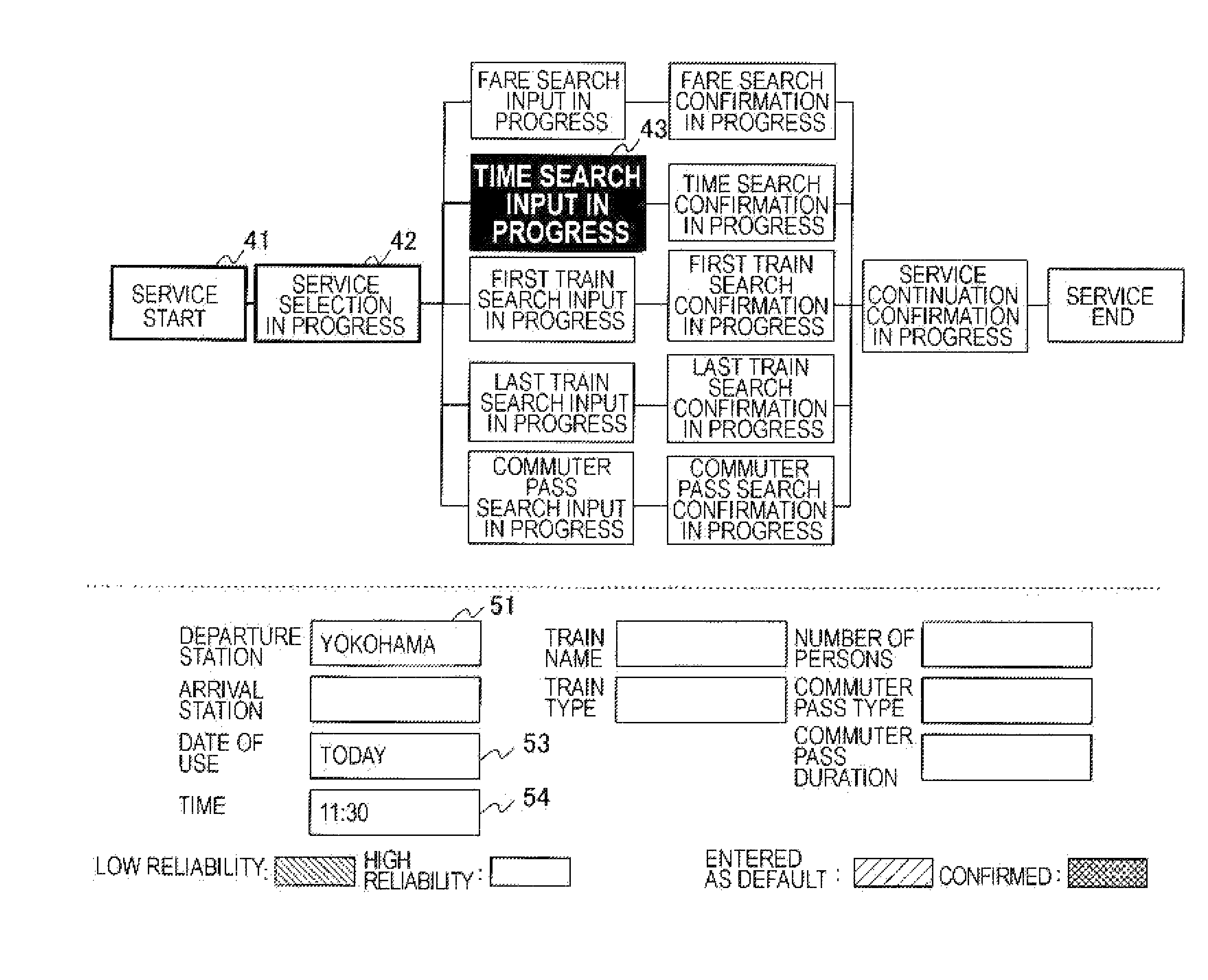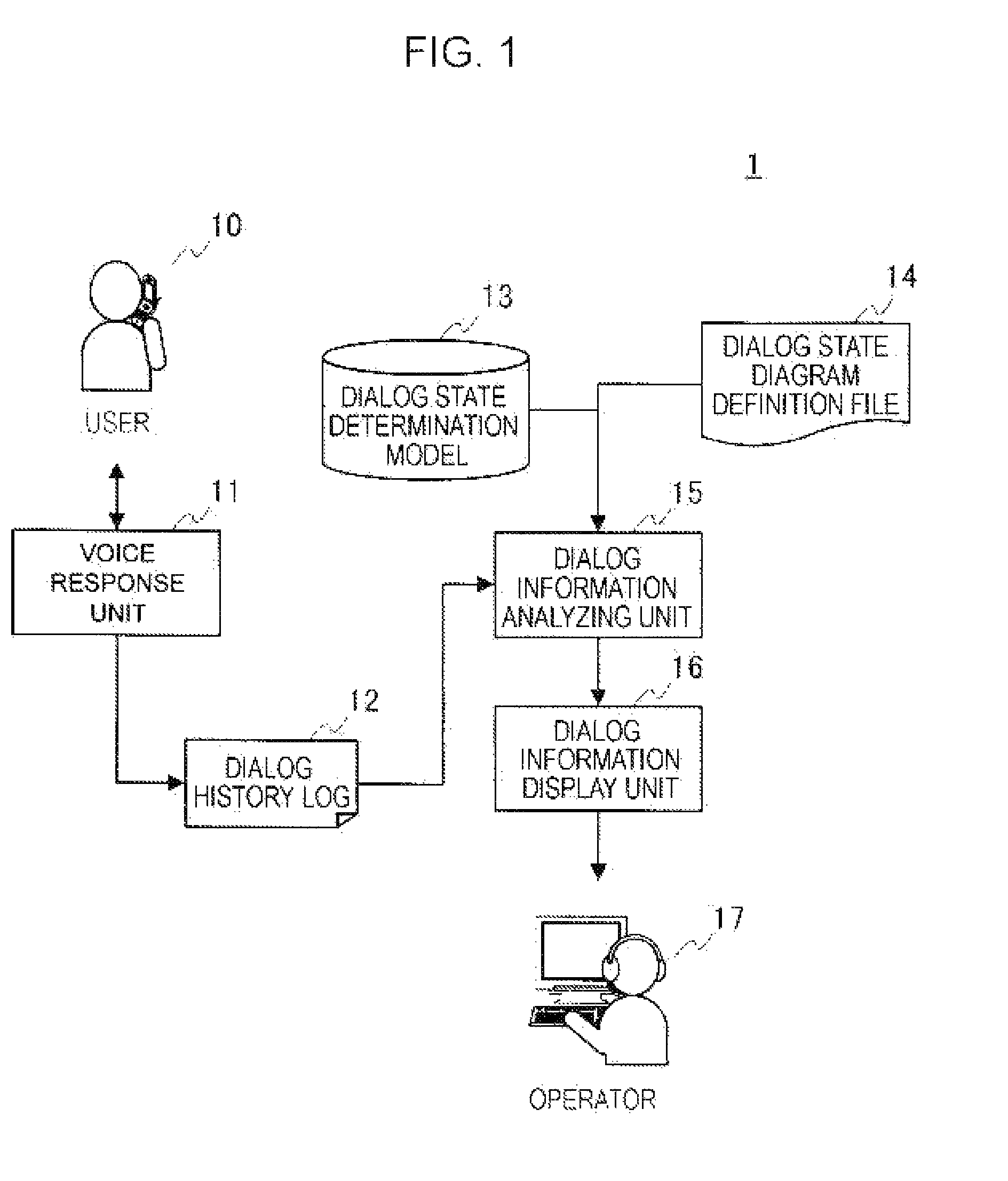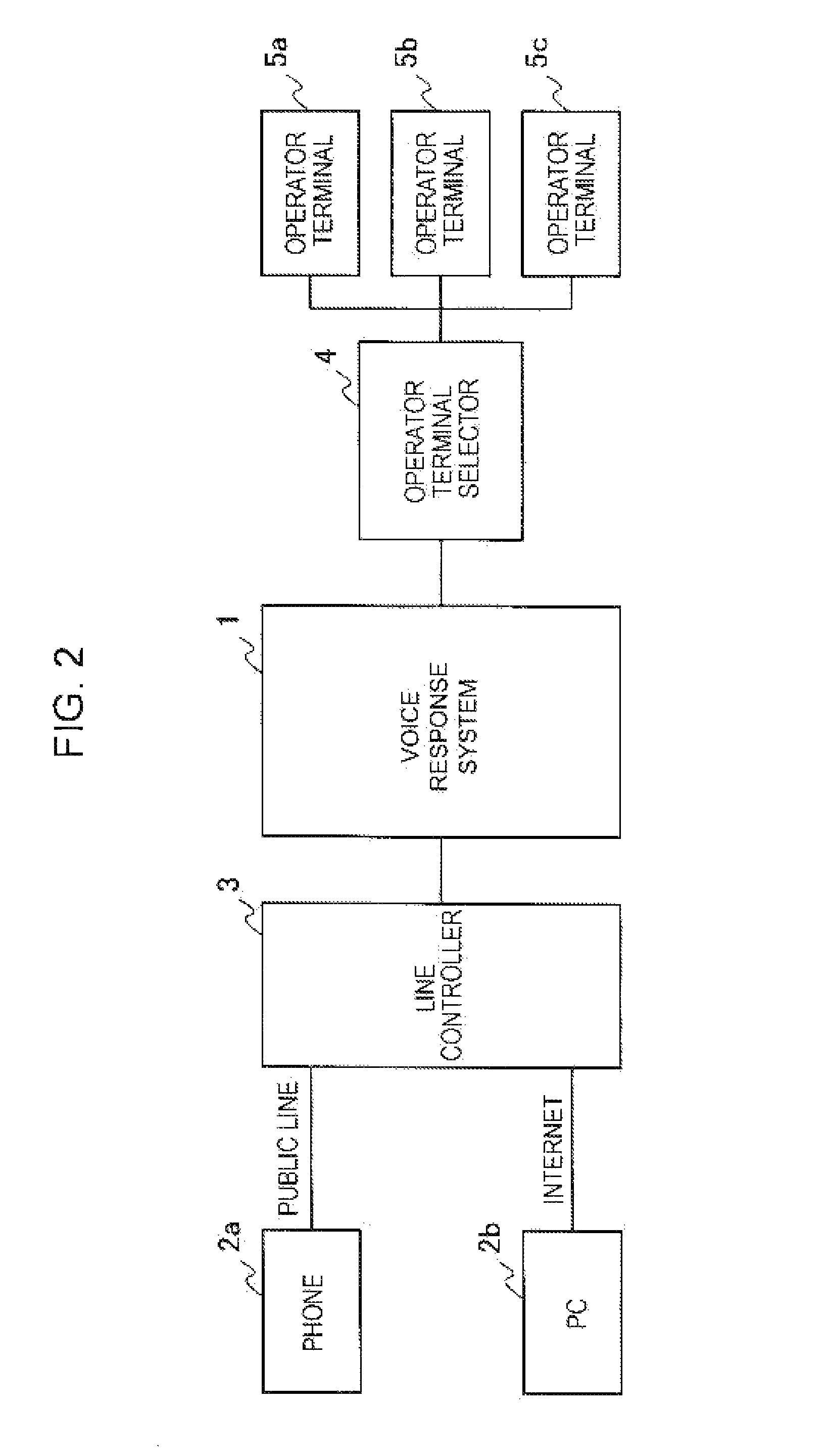Computer-implemented voice response method using a dialog state diagram to facilitate operator intervention
a computer-implemented and operator-friendly technology, applied in the field of automatic voice response systems, can solve the problems of frustrating and inconvenient routed to an operator, voice response system may not be able to provide an appropriate automatic response, and speech recognition software failure, etc., to achieve the effect of quick understanding the stag
- Summary
- Abstract
- Description
- Claims
- Application Information
AI Technical Summary
Benefits of technology
Problems solved by technology
Method used
Image
Examples
operation example 1
[0129]If
[0130]Pr(State 1, |ResID(t), ResID(t−1))=0.5,
[0131]Pr(State 2, |ResID(t), ResID(t−1))=0.3, and
[0132]Pr(State 3, |ResID(t), ResID(t−1))=0.2,
max(0.5, 0.3, 0.2)=0.5, is obtained. This gives S(t)=State 1.
operation example 2
[0133]If there is no Si that satisfies Pr(Si|ResID(t), ResID(t−1))>0,, and
[0134]Pr(State 1, |ResID(t))=0.2,
[0135]Pr(State 2, |ResID(t))=0.7, and
[0136]Pr(State 3, |ResID(t))=0.2,
max(0.2, 0.7, 0.2)=0.7, is obtained. This gives S(t)=State 2.
[0137]Generally, the dialog state determination model 13 can be expressed as S(t)=F(log for time “t0” through time “t”, dialog state for time “t0” through time “t”), where “t0” is a service start time, “t” is a current time, S(t) is a current dialog state, and F is a function for determining the current dialog state. In the example described above, input parameters for F are ResIDs (response sentence IDs) and past state S. It is possible to add results of recognition of user's speech to these input parameters. The dialog state determination model 13 may be a statistical model in which learning is done from an existing log as in the case of the example above, or may be a rule-based model as described below.
[0138]The following is a description of a pr...
example 4
Dialog Example 4
[0162]System: Welcome to the train information system. How may I help you?
[0163]User: What is the last train from Tokyo to Osaka?
[0164]System: The last train from Tokyo to Osaka?
[0165]User: Yes.
[0166]System: Are you going to travel today?
[0167]User: Tomorrow, please.
[0168]System: Are you going to travel tomorrow by Shinkansen Nozomi?
[0169]User: Can I talk to an operator, please?
[0170]FIG. 8 illustrates a screen displaying a dialog state of Dialog State 2, in the above Example. As in the case of FIG. 7, the dialog state is “last train search confirmation in progress”46. Of items already entered, “departure station”51 and “arrival station”52 are already confirmed, “date of use”53 has a high reliability, and “train name”55 and “train type”56 are entered as default values. In this example, the voice response unit 11 determines that an automatic response has been disabled by the user's request, and forwards the user's call to the operator.
[0171]Other methods of displayin...
PUM
 Login to View More
Login to View More Abstract
Description
Claims
Application Information
 Login to View More
Login to View More - R&D
- Intellectual Property
- Life Sciences
- Materials
- Tech Scout
- Unparalleled Data Quality
- Higher Quality Content
- 60% Fewer Hallucinations
Browse by: Latest US Patents, China's latest patents, Technical Efficacy Thesaurus, Application Domain, Technology Topic, Popular Technical Reports.
© 2025 PatSnap. All rights reserved.Legal|Privacy policy|Modern Slavery Act Transparency Statement|Sitemap|About US| Contact US: help@patsnap.com



